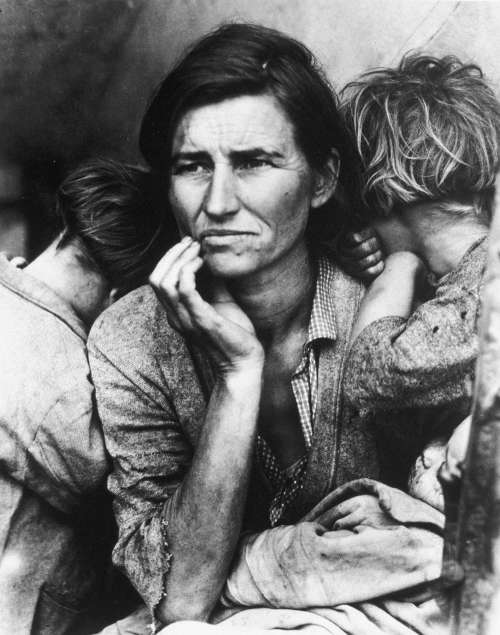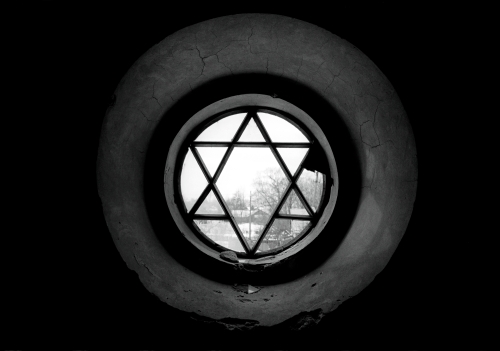
Queue for Robert Frank's Lecture at the NGA, March 26, 2009 - photo by Michelle Andonian
On Thursday afternoon, I, along with over 800 others, ended up in the nation’s capitol for a rare program with photographer Robert Frank and the National Gallery’s curator of photographs, Sarah Greenough. Frank rarely makes public appearances, so it was an opportunity to listen and learn first hand about his photographic work, which currently is the subject of the fine exhibition Looking In: Robert Frank’s The Americans. While discussing several iconic images from his oeuvre, Frank humbly remarked, “It was a very good day for photography.”

Outside the NGA - photo by Michelle Andonian, 2009
In their hour-long conversation, Greenough and Frank discussed his photography, influences (Bill Brandt and Walker Evans in particular), his love of America, and, most notably for me, a 1955 trip to Detroit to photograph what Frank referred to as “God’s Factory” – the Ford Motor Company’s River Rouge Plant in Dearborn, Michigan. For Frank, the automobile was an important part of the American dream, and he saw it everywhere. He thought it would be a good idea to see the place where cars were made and photographed at the factory for two or three days. It was difficult but worth it. The images were used in a number of his publications over the years including The Americans.
In March 2010, the DIA will open an exhibition of Robert’s Detroit work from 1955. It will be the first time these photographs will be on view to the public and an opportunity to see Detroit and the famous Ford factory the way Robert Frank experienced it at mid century.

 Detroit has fallen on more than its share of strange times in recent months, but the museum was bustling this past week with the Norman Rockwell exhibition drawing over 10,000 visitors in its first week and the DIA’s theater filled on Tuesday for an evening program with South African artist William Kentridge. All this good energy has been a boost for staff here at the DIA, who have spent the last few weeks trying to regroup from a recent restructuring here at the museum.
Detroit has fallen on more than its share of strange times in recent months, but the museum was bustling this past week with the Norman Rockwell exhibition drawing over 10,000 visitors in its first week and the DIA’s theater filled on Tuesday for an evening program with South African artist William Kentridge. All this good energy has been a boost for staff here at the DIA, who have spent the last few weeks trying to regroup from a recent restructuring here at the museum.





